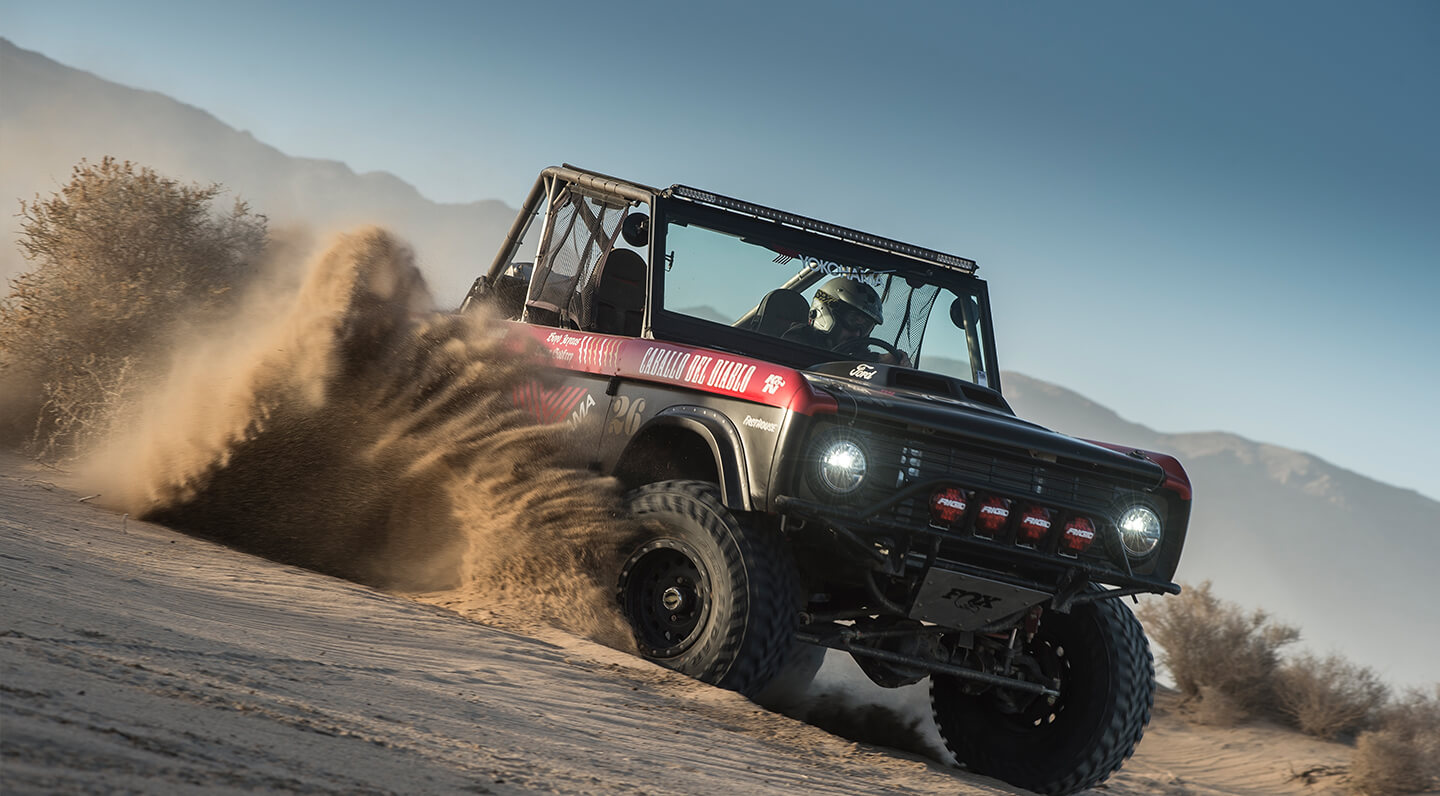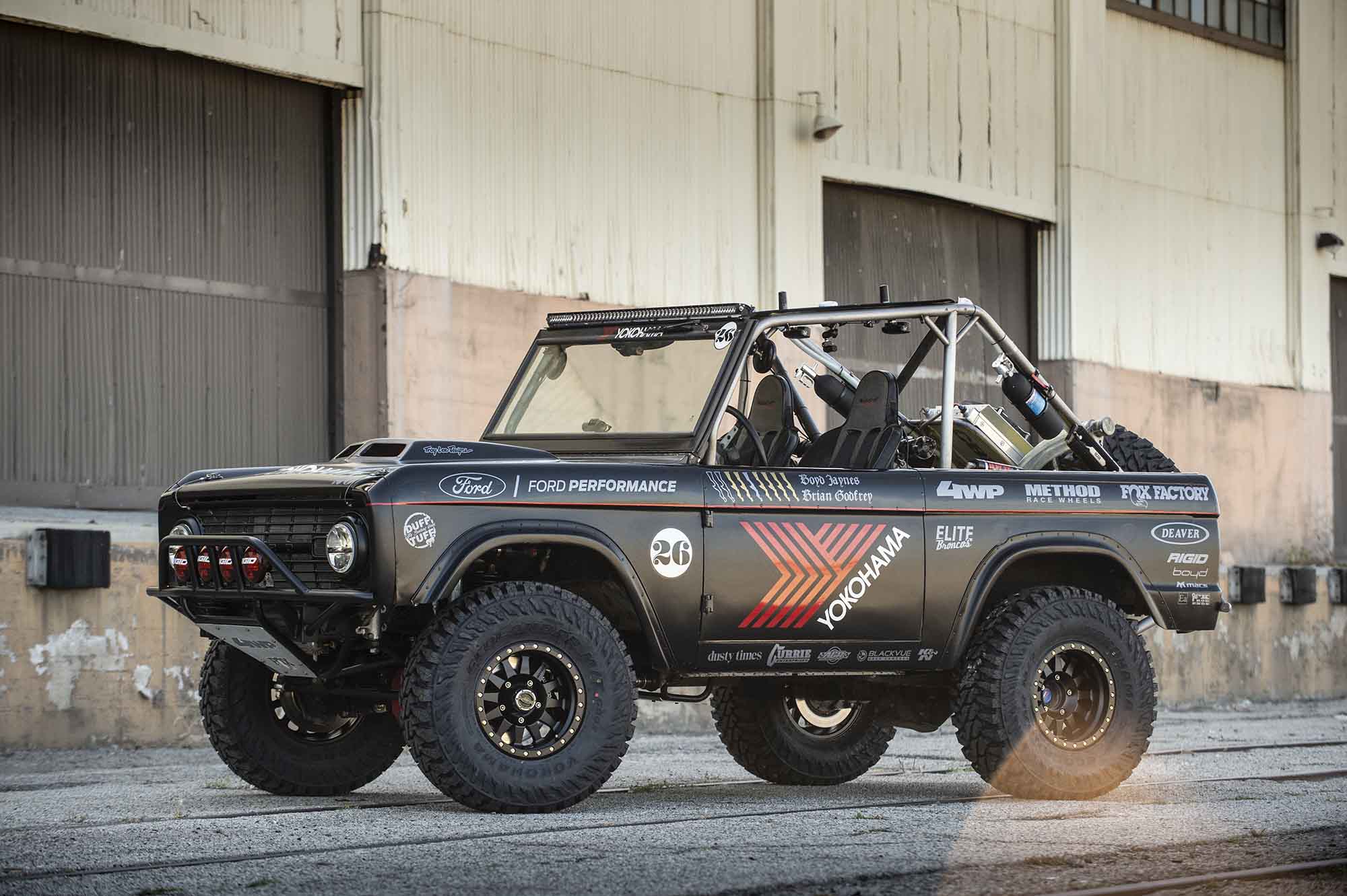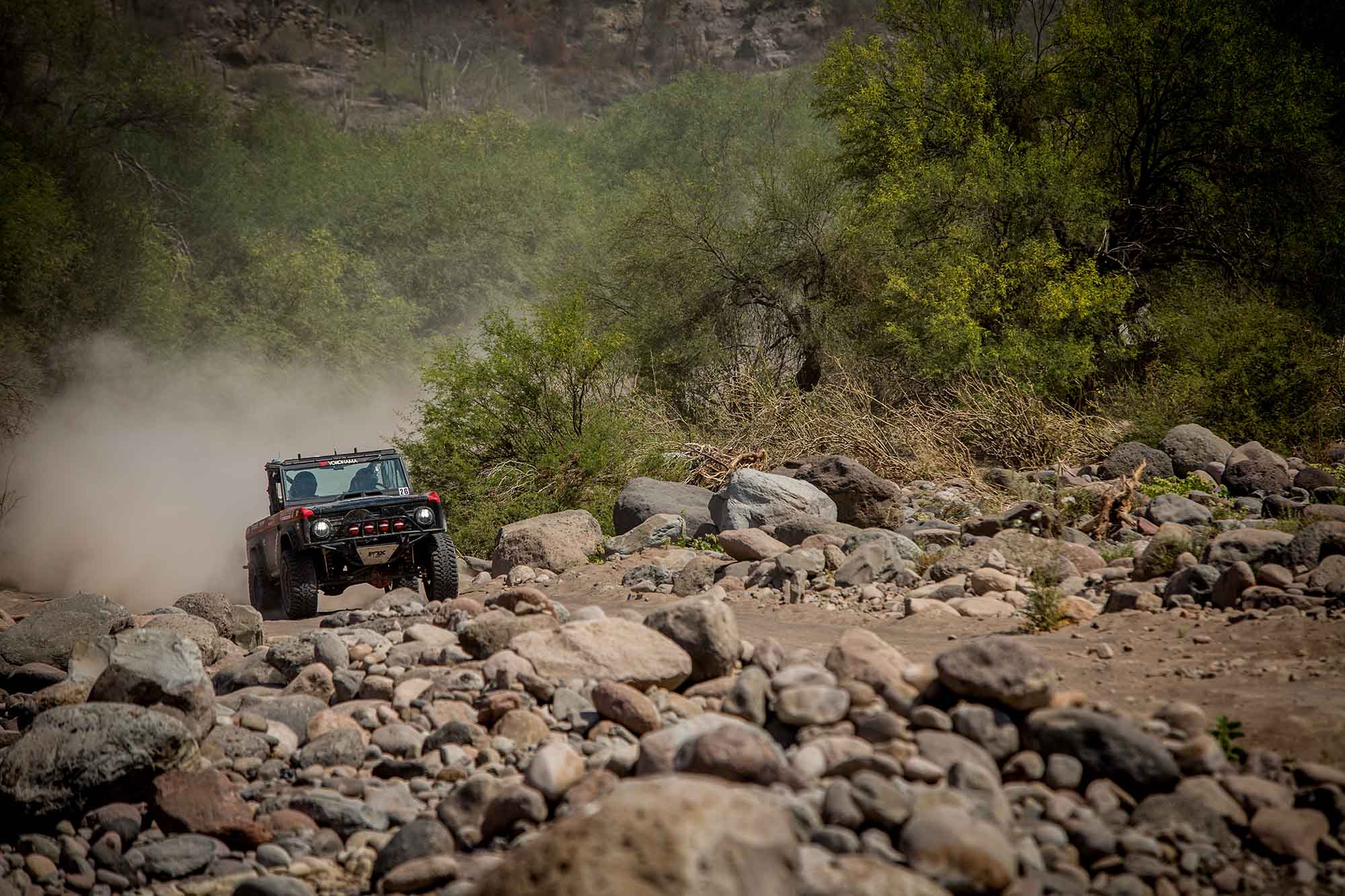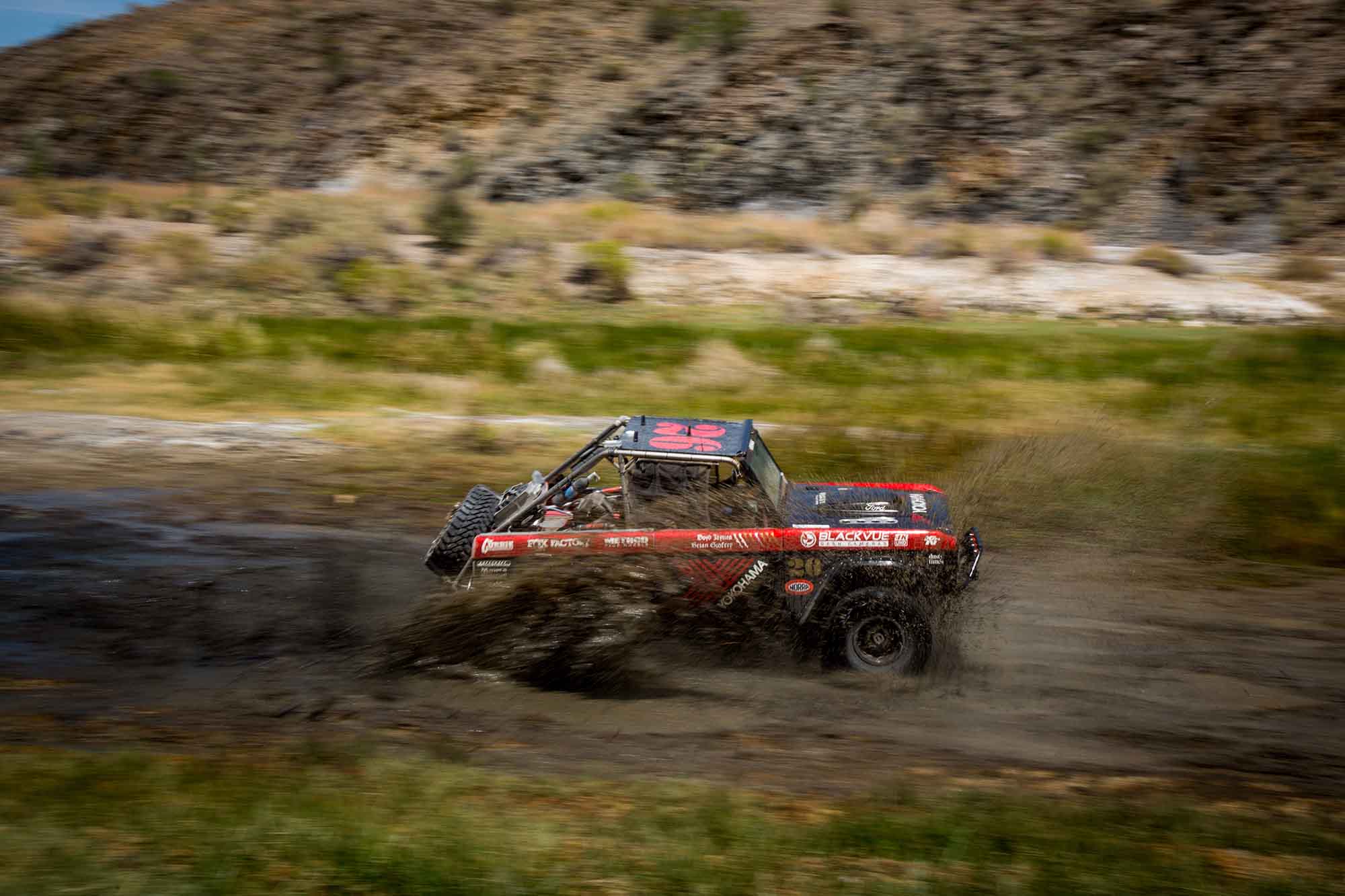
1,000 Miles Of Baja In A 51-Year-Old Bronco
The vast majority of us have heard of Baja, Mexico. The land south of the border brings up romantic visions of rugged landscapes, remote beaches, and vast expanses of wild, untouched beauty. Of course, there is also the undeniable attraction of refreshing cerveza, legit tacos, fresh shrimp, and buttery lobster. Baja is also world famous for the race that has run on the peninsula for the last 52 years, the Baja 1000. It has attracted racers from across the globe with the challenge of taking on 1,000 miles of brutal Baja terrain.
Anyone that has heard of the Baja 1000 has dreamt of racing it. Bouncing across the peninsula in some form of a racecar is not just a massive challenge, but a hell of a lot of fun too. Reality can be a harsh mistress though. A decent racecar costs a lot of money. That is just the beginning of expenditures as it costs money to prep it. The non-stop slog straight down the peninsula means that multiple chase trucks and pit stops are needed adding to the costs and difficulty. And, for some, being up for 36 hours straight and stuck in a silt bed doesn’t seem like a lot of fun. For many, the Baja 1000 remains just an elusive dream.
There is another way to go racing on the Baja peninsula though. Racing on Baja originally started with the NORRA Mexican 1000 way back in 1967. Eventually, the race transitioned to the Baja 1000 and NORRA as a sanctioning body faded away. In 2010, both NORRA and the Mexican 1000 were revived but with some keys differences. Instead of a non-stop march to the finish line, the Mexican 1000 uses a multi-day, rally format. And, even though more modern racecars are allowed, its focus is more on vintage racers.
Many will confide that, with its unique multi-day rally format, the Mexican 1000 is actually more fun than the Baja 1000. And, with its focus on vintage and more accessible racecars instead of the latest technology, it is more affordable as well. Two guys who discovered this a long time ago are Boyd Jaynes and Brian Godfrey. They started racing the Mexican 1000 in 2010. Not only do they race but they do it in style with a 1968 Ford Bronco dubbed the Caballo Del Diablo (or The Devil’s Horse for us gringos). They have been pretty damn successful at it too with six class wins to their name. We sat down with them to get the scoop on what is like to take on 1,000 miles of Baja in a 51-year old Bronco and why they keep going back.
The 2019 NORRA Mexican 1000 takes place from April 26-May 3. For updates on how Caballo Del Diablo is doing follow The Dirt and 4WP’s social media.
https://www.instagram.com/thedirtby4wp/
https://www.facebook.com/thedirtby4wp/

The Caballo Del Diablo is a 1968 Ford Bronco and is indeed one very sweet ride. After a bit of trail and error in the beginning, it has proven to be a reliable steed.
So how did this all get started? What made you think racing a 51-year-old vehicle was a good idea?
Boyd: In 2009 I heard there was going to be a race in Baja specifically for vintage vehicles. It seemed way more accessible than an expensive, modern racecar. Early Broncos were very reasonably priced back in 2008 when I bought this one and hadn’t shot up in price yet. Also, it sounds cool to say you race an vintage Bronco.
Brian: I came on board in 2011. This was when we formal started the “Caballo del Diablo” team. For me, I just wanted to have an outlet for my love of off-road racing that was possible financially and with my time requirements. The Bronco looked like the coolest thing to drive and over time, 6 years now, we really tried to elevate our appearance and results. The results speak for themselves, and our look I feel does as well. We have big names helping out the program now including companies like 4WP and Ford. It’s just crazy to think, but I guess it’s not really. We work really hard all year to build those relationships and keep them going. They don’t just call us.
How is the NORRA 1000 different than the Baja 1000?
Boyd: The format of the Mexican 1000 is really different. It is a stage rally over 5 days covering the entire Baja peninsula with overnight stops enabling vehicle service and repairs. The Baja 1000 is a non-stop sprint, most years run in a loop starting and ending in the same place.
Brian: Well the Baja 1000 is a race and the Norra 1000 is a rally. The only thing they really have in common is the geographic location and that tires touch the dirt. NORRA is all about having a great time and competing in a rally style format. A rally format is a lot more calculated than a non-stop race. In a non-stop race the clock doesn’t stop until you reach the finish line. The rally format requires a different type of strategy, which can be trickier than a non-stop race. One of the bigger things for a team of our small size is that we don’t have to have a ton of extra support vehicles to compete.

The NORRA Mexican 1000 runs the entire length of the Baja peninsula but does it over a five-day period. This gives teams the opportunity to work on their vehicles each night and cuts down on the need for multiple crews and chase trucks.
Does that different format make it more fun to race?
Boyd: It is definitely less intense and the ability to repair your vehicle takes some of the pressure away as well. In my opinion, the multi-day format is what really makes it fun. Every morning is like a new race from a new place and a chance to redeem yourself or reset your luck to some extent.
Brian: It makes it more fun, as every day or stage you have a chance to gain or lose time. It also gives you planned times to support the race vehicle.
What attracted you to a classic Bronco in the first place?
Boyd: First and foremost because they are cool, like Steve McQueen, Parnelli Jones, and Rod Hall cool. Of course, I knew of their legendary status as an off-road racing platform too. The straight-forward design also seemed like it would be easy to work on.
Brian: All of the badass guys with dirt under their fingernails back in the day raced a Bronco. That’s why we race a Bronco.
Has the bronco changed a lot over the years? If I remember right some things fell off of it the first year.
Boyd: The first couple of years we sucked. The truck wasn’t really sorted out, and we didn’t know how to fix anything. It took two or three years to get enough tools to really learn how to take it apart. The first year the entire front clip with the hood and fenders decided to detach from the rest of the truck and the repairs we made in a little muffler shop during the race are still holding strong to this day. Each year we make little upgrades to what has proven to be a very reliable truck. For 2019, we made the most significant change yet though with a new Ford Performance 347 stroker motor. This is a big power gain and a significant weight loss in a dependable package straight from the mothership in Detroit. The fact that it sounds like an angry demon when driven doesn’t hurt either.
Brian: I wouldn’t say a ton has really changed but we have changed a lot. I would say we have refined the crap at of it though. We have replaced tons of parts with better parts. It has gone from a weekend toy to a legit race car.

A short wheelbase Bronco can be a handful at speed and might not be the fastest vehicle out there. But it has proven to be an affordable way to enjoy racing in Baja while keeping with NORRA’s vintage theme.
So what are the major rules that govern your class? We have seen other “Broncos” at NORRA that really don’t have much Bronco left. Is the Bronco you race closer to its original form?
Boyd: We are in the “Pioneer 4×4” class, which is primarily characterized by vehicles from the 1967-75 era with solid axles and four-wheel drive. There is a 35-inch max tire size allowed along with a 2-inch diameter maximum for the shocks. The suspension has to be close to stock as we aren’t allowed to change any of the geometry or to use bypass or coil-over shock technology. Our Bronco uses all the original mounting locations for the suspension. The result is a minimal amount of wheel travel, but a very budget friendly build.
What is racing a short wheelbase Bronco with a decent amount of horsepower and not a ton of travel or brakes over 1,000 miles of Baja really like?
Boyd: The bucking horse comparison is pretty accurate to how a short-wheelbase Bronco behaves in the dirt. It wants to spin around all the time and requires lots of steering input to keep it pointed straight. Selective throttle application is critical to keep the rear planted and not to tear up drivetrain components.
Brian: Umm, it is something new every day. It’s not the same handling car as it was when it takes off from the line, that’s for sure. I think that’s part of our success though. All off-road vehicles go through slight changes during a long off-road race. Knowing that Boyd and I are there, in the cab, to witness and adapt to these changes is a huge advantage over teams who put a new driver in every day. What is it really like? The best way I can describe it is it’s like being in a paint shaker that may or may not want to stop when you want it to.

For Boyd Jaynes, Brian Godfrey and the rest of the team, the NORRA Mexican 1000 is as much about having fun as it is racing. They still manage to remain very competitive too.
How do you guys balance having fun with being competitive? Correct me if I am wrong, but I think your Bronco has the most wins of any vehicle at NORRA? You guys are competitive, but it still seems you like you have plenty of fun racing.
Boyd: You can’t really take yourself too seriously if you’re dressed up in a fireproof mariachi outfit. But let’s be honest, nobody enters a race to lose. Amazingly, we have the best record of any team at NORRA with 6 class wins out of 9 starts. What isn’t officially measured is the amount of fun generated within each team. I’m confident we win that too.
Brian: Fun is always the number one goal. Otherwise, what is the point really? Winning is the result of preparation and opportunity, as they say, and for us, it very much applies. People see us spiting beer from our mustache framed mouths while wearing hilarious, yet cool, mariachi driving suits and say, “those guys are having a ton of fun and they must be idiots.” In reality, we view our program no different than any top-level racing program. The truck and team need to be ready to win before we cross the border. We spend countless hours prepping, doing media, developing chase strategies, all to have our shit dialed in when the mariachi hats go on. We have a tight team of supporters who are helping prop up our “unprepared and don’t care” personas. I guess the biggest joke of all is we are actually pretty damn smart.
Neither of you is destitute, but you don’t have family money funding your program either like some racers. Obviously, racing isn’t cheap, but is NORRA something that the average Joe with a decent job and some buddies could do?
Boyd: Motorsports is always expensive. Yes, this is a grassroots level event and way cheaper than trying to compete on a more modern level. But after all the pre-race prep it still involves a caravan of your buddies burning gas and drinking beer for a week on your way to Cabo. You can do this event on a budget no problem though. Some guys drive their “race” vehicle down to the start, do the race with no support vehicle and then drive the same vehicle back home on the highway. The beauty of this type of off-road racing is that there is the freedom for various levels of efforts and budgets.
Brian: For sure on bang for your buck and camaraderie with like-minded people NORRA delivers. Our program has grown to be a bit more involved from what it was when we started. But the Mexican 1000 is the best race for someone wanting to make the leap into trying off-road racing.

A small and dedicated team works to get the Bronco to the finish line every year. So far, the Caballo Del Diablo team has managed six class wins while still enjoying everything that racing in Baja has to offer.
You have been racing the NORRA 1000 for a long time now. What keeps you going back every year?
Boyd: With our lives getting busier both professionally and personally, the challenge of doing this race seems to get tougher each year. The Bronco seems to need more work every year to keep it together, and the pressure to perform comes with more investment. All of that melts away when you are driving a cool ass vintage Ford Bronco through a cactus-lined trail in Baja with a big mustache covered in dust. We look forward to that feeling 51 weeks a year.


2